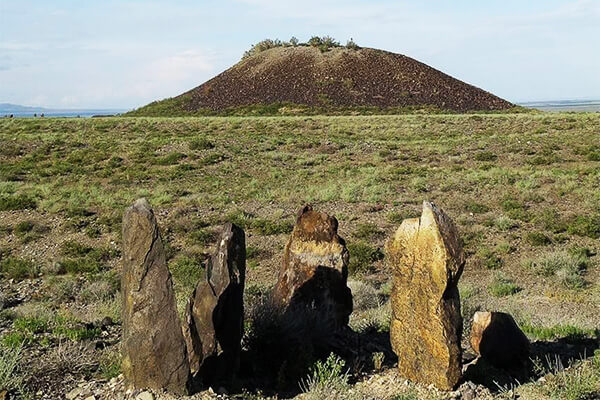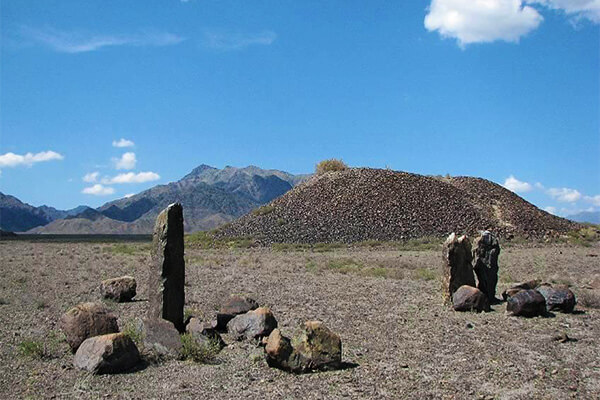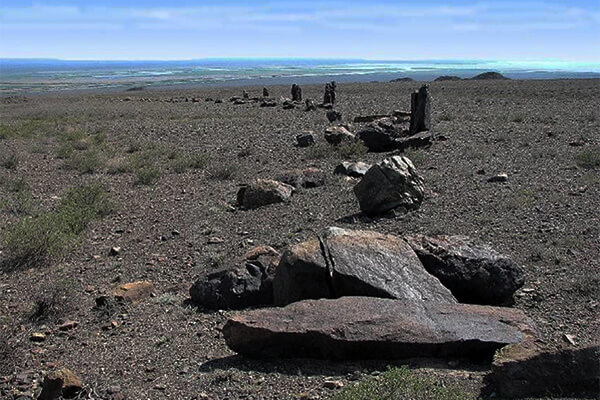Royal Tombs
The Saka burial mounds of Besshatyr (translated from Kazakh as "Five Tents") are a complex of royal tombs dating back to the 1st millennium BC, one of the largest historical and cultural heritage sites of the Altyn-Emel National Park and the entire Jetysu Region as a whole.
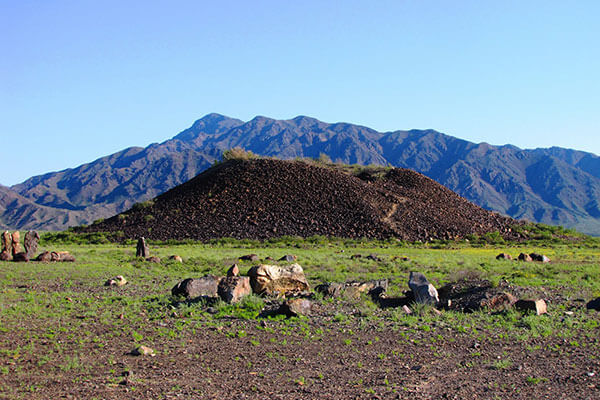
Saka Pyramids
Besshatyr is a necropolis (burial site) of the leaders of the nomadic Saka tribe (known in the Western world as the Eastern Scythians), who lived in this area from the 6th to 4th centuries BC. The burial mounds are approximately 2,500 years old.
The Sakas were a group of sedentary and nomadic tribes that inhabited the entire territory of Kazakhstan and far beyond in the 1st millennium BC. Their lifestyle was characterized by cattle breeding, worship of the forces of nature, the "animal style" in art, military democracy, and equal rights for men and women.

Origin of the Name
The name "Besshatyr" ("five tents") likely derives from the number of the largest burial mounds in this area. Along the route, one can see numerous smaller burial mounds scattered throughout the area between the Sholak Mountains and the Ili River.
In general, small Saka burial mounds are found throughout the Altyn-Emel National Park and the Jetysu Region as a whole.
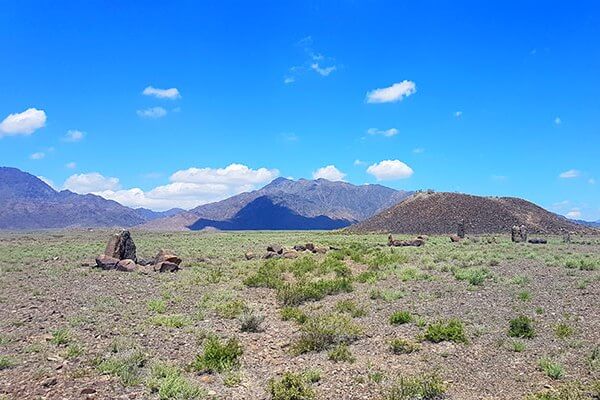
Quantity and Dimensions
A total of 31 burial mounds were discovered in this area. 21 of these mounds had stone coverings and 10 had a rubble and earth fill. The mounds extend 2 km from north to south and 1 km from west to east. The total area of the Besshatyr burial ground is approximately 2 square kilometers.
The mounds are divided into large, medium, and small. Mounds with a diameter of 50-100 meters were erected for kings (tsars), 30-40 meters for renowned warriors, clan leaders, and nobles, and 15-25 meters for ordinary warriors. The largest, the so-called Tsar's Mound, is 17 meters high and 105 meters in diameter.
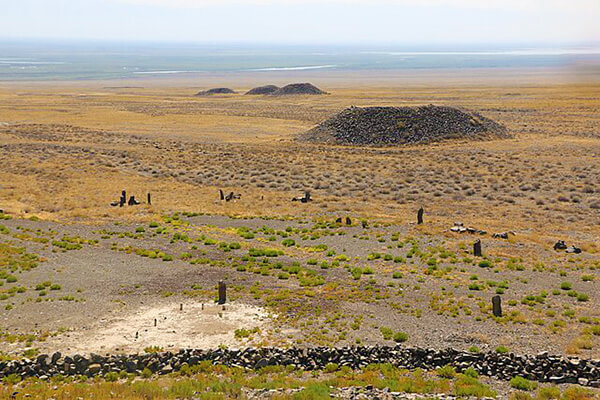
Internal Structure
Besshatyr was explored by the Semirechye archaeological expedition in 1957 and 1959-1961.
Complex underground passages were discovered in the large burial mounds. The interiors of the mounds were lined with Tien Shan spruce, which was harvested in the Zaili Alatau Mountains, 200-250 km away, and floated down the Ili River.
Unfortunately, the royal burial mounds were plundered in ancient times, and the remaining artifacts and the grandeur of the structures allow us to only guess at the value of the lost items.
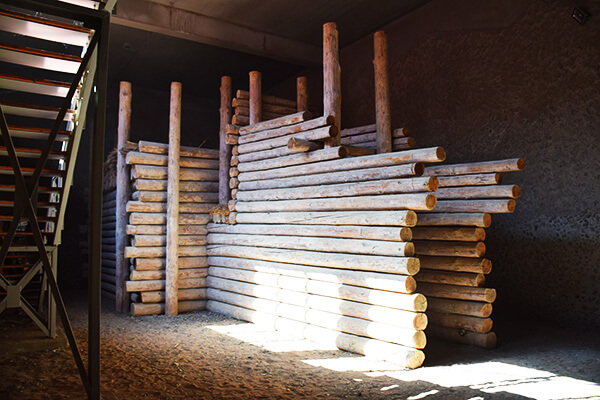
Menhirs
The Besshatyr Mounds were not only a burial sites but also a place for religious ceremonies. Altars in the form of circles made of laid down and vertically installed stones (on the eastern side), which could be correlated with the cult of the sun, characteristic of the Saka culture, are of a great historical and cultural value.
The biggest megaliths, or menhirs (from the Breton "men" - stone, and "hir" - long), were erected near the Tsar's Mound. Many menhirs are carved with images of animals, symbols of the sun, as well as tamgas of Kazakh clans.
Location
Besshatyr is located in the western part of Altyn-Emel Park on the right bank of the Ili River, between the Degeres Mountains (Dzhungarian Alatau) in the west and the Small Kalkan Mountain in the east, 35 km from Checkpoint 1 (access from the village of Shengeldy).
Distance from Almaty: about 180 km.
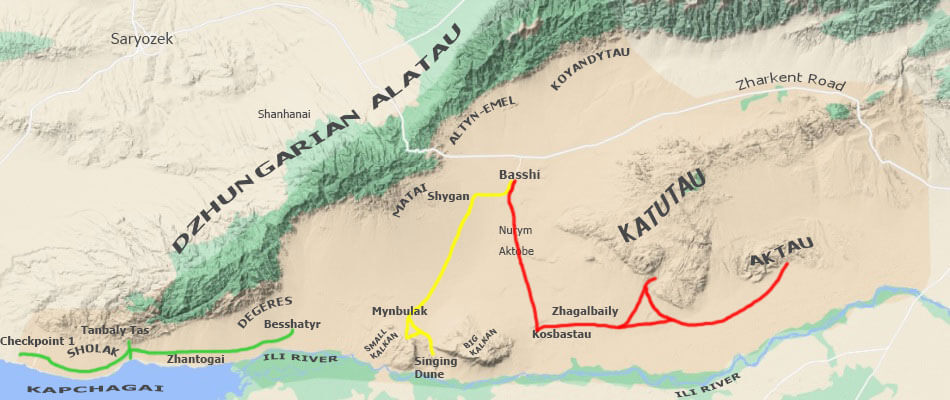
Tourist Attraction
To reach the Besshatyr Mounds, you must enter the national park through Checkpoint 1 from the village of Shengeldy.
In this part of the park there is a visitor center, an observation deck, camping sites, toilets, gazebos.



